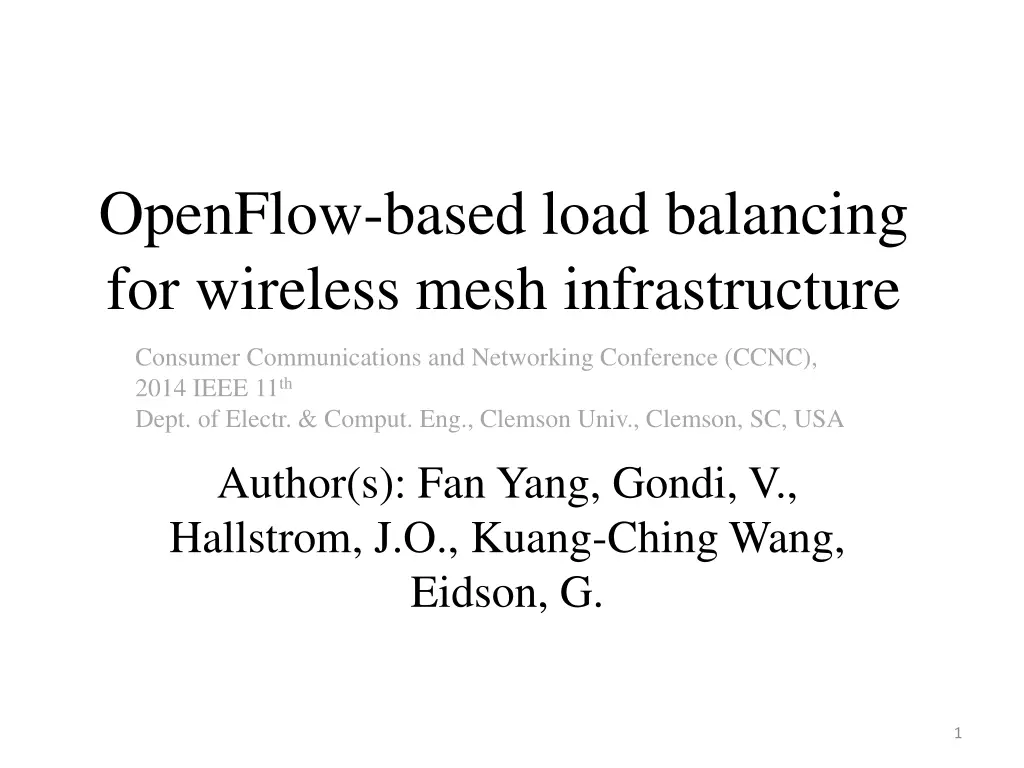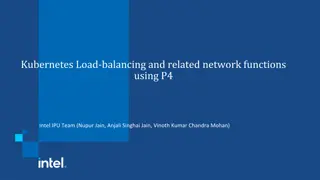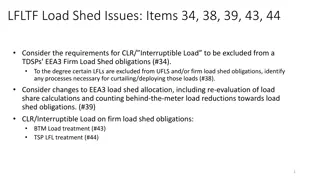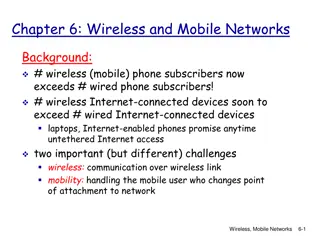
OpenFlow-based Load Balancing for Wireless Mesh Infrastructure
"Explore how OpenFlow technology enhances load balancing in wireless mesh networks, optimizing network performance by distributing traffic more efficiently among nodes. Learn about routing protocols, system architecture, experimental analysis, and the benefits of real-time data flow redirection."
Download Presentation

Please find below an Image/Link to download the presentation.
The content on the website is provided AS IS for your information and personal use only. It may not be sold, licensed, or shared on other websites without obtaining consent from the author. If you encounter any issues during the download, it is possible that the publisher has removed the file from their server.
You are allowed to download the files provided on this website for personal or commercial use, subject to the condition that they are used lawfully. All files are the property of their respective owners.
The content on the website is provided AS IS for your information and personal use only. It may not be sold, licensed, or shared on other websites without obtaining consent from the author.
E N D
Presentation Transcript
OpenFlow-based load balancing for wireless mesh infrastructure Consumer Communications and Networking Conference (CCNC), 2014 IEEE 11th Dept. of Electr. & Comput. Eng., Clemson Univ., Clemson, SC, USA Author(s): Fan Yang, Gondi, V., Hallstrom, J.O., Kuang-Ching Wang, Eidson, G. 1
Outline Introduction Routing protocols in Wireless Mash Networks OpenFlow vs Traditional forwarding OpenFlow Technology Motivation System architecture Load Balancing Test Cases Experimental analysis Conclusion Reference 2
Routing protocols in Wireless Mash Networks Ad hoc On-Demand Distance Vector (AODV) Optimized Link State Routing Protocol (OLSR) link-state routing protocol Nodes advertise information only about links with neighbors. 3
Motivation Many routing protocols use pre-selected nodes for relaying traffic, causing those nodes to be heavily used, while leaving other nodes idle. It ensures that each node has approximately equal traffic to forward, so that optimal network performance is achieved throughout the network. 6
Load Balancing Test Cases Basic setup of data flow paths 8
Load Balancing Test Cases(Cont.) Data flow redirection between mesh nodes 9
Conclusion Traditional solutions require compute- intensive routing algorithms running at each mesh node. Presented combines OpenFlow Controller and a performance monitoring tool to enable real time data flow redirection. 11
References N, McKeown, T. Anderson, H, Balakrishnan, G. Parulkar, L. Peterson, J. Rexford, OpenFlow: Enabling Innovation in Campus Networks ,Mar. 14, 2008 12






















